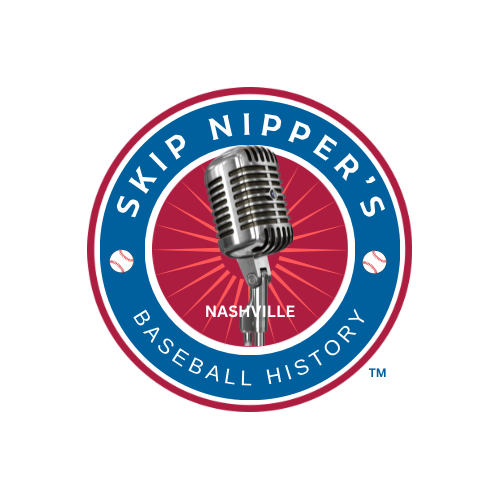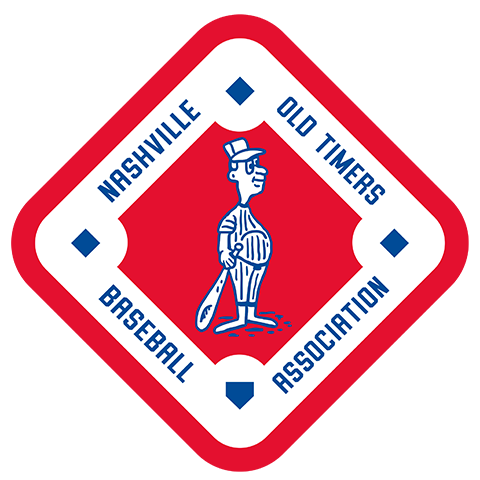An early mention of African-American participation in a local baseball game was reported in the Nashville Daily Union and American on the September 18, 1866 with reference to “Brownlow’s Black Boys Base Ball Club” (probably a reference to Governor William Brownlow, who was a proponent of extending civil rights to African-Americans). Whether this was a real team or just a gathering of players from the black community, the game took place in Sulphur Spring Bottom.
Teams organized by the 1900s were the Baptist Printers, Maroons, Methodist Publishing House, North Nashville Tigers, and Nashville Standard Giants. Fisk and Pearl High School ball fields were hosting games on a regular basis, and often Negro League teams traveled to Nashville to challenge the best local teams.
Baseball’s groundswell in the Black community is evidenced by an important event that took place on Tuesday, February 19, 1907. A meeting was held at the residence of J. W. White to organize the Standard Giants Base Ball club as reported in the February 22, 1907 edition of the Nashville Globe:
“Manager White called the house to order and Mr. C. B. Reaves was made President: Mr. J. W. White Manager, and W. G. Sublett, Secretary, and by unanimous voice of the house Mr. Howard Petway who did stunts for one of the professional teams of Chicago last season, was elected captain…
“…Standards will travel extensively, having arranged games with Memphis, Hot Springs, Little Rock…playing all the leading teams, Chattanooga, Atlanta, Birmingham, Macon, New Orleans, and Beaumont, Texas…One peculiarity is that every member claims Nashville as his home. It is composed exclusively of home talent, a characteristic no other team can boast of, and it is certain that every member will put up a fight for the glory of his home.”
This would lead to more teams. By 1910 the Capital City League was the premier league for African-American teams, with the Standard Giants and other league members playing at Greenwood Park and Athletic Park. The Black Sox, Nationals, Baptist Hill Swifts, Athletics and Eclipse were established, and the community supported them all.
In 1918 the Standard Giants club was purchased by Thomas T. Wilson, a native of Atlanta who had moved with his family to Nashville where his parents studied medicine at Meharry Medical College. As a young man Wilson had accumulated wealth through his interests in entertainment, a local rail line, and ownership in local night clubs.
On March 26, 1920, Wilson and seven investors pooled $5,000.00 and chartered a Tennessee corporation, Nashville Negro Baseball Association and Amusement Company, for the purpose “of organizing base ball clubs and encouraging the art of playing the game of baseball according to high and honorable standards and of encouraging the establishment of a league of clubs in different section(s) of the state.”
Wilson contributed to the baseball success of his players, namely Eddie Noel, Walter Campbell, Henry O’Neal, Joe Bills, Haywood Rhodes, and Blaine Boyd. Teams continued to form and included the White Sox and Maroons; one of the prominent players in the 1917 Capital City League played for the Black Sox was Herbert T. “Hub” McGavock. Playing for the Standard Giants in 1920, after a stint in the Army he returned to play with a New Orleans club where he was a teammate of future Hall of Famer Norman “Turkey” Stearnes. Stearnes was born in Nashville in 1901.
A best-of-three Negro League “North vs. South” All Star series was held at Sulphur Dell in the fall of 1934. In the first game of a double header on Sunday, October 7, Stearnes of the Kansas City Monarchs hit a home run in the 12th inning to seal the win for the North by a score of 2-1. The North All Stars also won the second game 8-1. The South lineup came from Birmingham, Memphis, Monroe, and New Orleans; Nashville, Kansas City, Pittsburgh, and House of David stars represented the North. Felton Snow, Sammie Hughes, Tommy Dukes, Jim Willis and Andy Porter were chosen from the Nashville Elite Giants.
Future Hall of Fame members Willie Wells, Mule Suttles, Cool Papa Bell, Satchel Paige, and Josh Gibson joined Stearnes, who was elected to the Hall of Fame in 2000, on the North squad.
Wilson renamed the Negro League Nashville Elite Giants in 1921, and announced that the team would play “all-comers”, including white-only teams. In 1928 a new ballpark was constructed by Wilson to hold 8,000 fans, and was located in Trimble Bottom, the largest Negro community in Nashville. Wilson Park would not only host games but community events, both white and black. Years later, the ballpark was torn down and Wilson’s Paradise Ballroom was built in its place.
Tom Wilson Park was often used by the Nashville Vols and many times pre-season games were held versus the Elite Giants.
The Elites played in the professional Negro Southern League until granted membership in the Negro National League for 1930. Just coming off the Great Depression several teams pulled out of the league, including the Birmingham Black Barons who sold one of their stars to Wilson as a drawing card, future Satchel Paige. With the future Hall of Famer in the Elite Giants fold, however, Wilson moved his club to Cleveland and renamed them the Cubs, but returned to Nashville for 1931 when the Negro National League folded.
Reorganizing in the Negro Southern League in 1932, Gus Greenlee’s Pittsburgh Crawfords were scheduled for the home opener, drawing a large crowd from throughout Nashville’s populace.
Nashville won the second half of the split-season in 1932, earning a spot in the championship series against the Chicago American Giants. The team featured Stearnes as its star player.
“In 1932 with Joe Hewitt as manager, the Elite Giants were second half champions and played Chicago American Giants in the World Series,” relates Bill Plott, a former sports writer whose book The Negro Southern League is an exhaustive research authority . “World Series is a very arbitrary designation by Chicago and Nashville newspapers; “Postseason Series” is probably more accurate. Chicago won 4 games to 3.”
For 1933 a new Negro National League was restructured, and the Elite Giants remained a member of the league, but Wilson moved the club from Nashville to Columbus, Ohio in 1935, Washington, D. C. in 1936-37, and Baltimore in 1938-1950.
When the Elites relocated to Baltimore the team would still hold spring training in Nashville, and a minor league club was formed to feed the parent club with players. On one occasion, on April 6, 1947, the Nashville Cubs beat their parent Baltimore Elite Giants at Sulphur Dell 5-1 in the first exhibition game of the season and local hero Butch McCord was the first baseman for the winning team.
A bevy of successful players have connections to Nashville and the Elite Giants.

Norman Thomas “Turkey” Stearnes began his career in Nashville in 1920 after attending Pearl High. He later played 10 seasons for the Detroit Stars in the Negro National League and was noted as a prolific home run hitter; reportedly he slugged 144 home runs in 585 games. After joining the Chicago American Giants in 1932, Stearnes played in the inaugural East-West Negro League All Star Game in 1933.
Henry Kimbro was a member of the Elite Giants for 12 seasons beginning in 1937, playing in All-Star games from 1943-1947. Born in Nashville in 1912, he grew up on the sandlots of his hometown and played for 17 years in the Negro Leagues. Known for his strong outfield arm and speed around the bases, he retired following the 1953 season with the Birmingham Black Barons and owned a taxi service and a gas station in Nashville.
Born in Alabama in 1905, Felton Snow’s family moved to Louisville and by 1929 he was playing for several local teams. Known as a good fielder, base runner, and hitter he eventually joined Tom Wilson’s Nashville Elites and became an outstanding third baseman.
Snow played in two Negro League All-Star games, batting .670 in the 1935 All-Star game. His team mates included Hall of Fame members Satchel Paige, Josh Gibson and Cool Papa Bell on the 1936 West All Star team.
Managing and playing for the Baltimore Elite Giants in the 1940s, Snow’s highest batting average in seven seasons as manager-player was .333. He became manager of the Nashville Cubs and retired from baseball in 1950 with over 21 seasons under his belt.
Catcher Bruce Petway was known as having superb arm strength during his Negro League career with the Leland Giants, Philadelphia Giants, Chicago American Giants, and Detroit Stars. Born December 23, 1885 in Nashville, Petway was manager and a teammate of Turkey Stearnes in Detroit between 1923-1925.
Clinton “Butch” McCord began his baseball career in 1947 when he signed with his home town Nashville Cubs out of Tennessee State University. The next season McCord was with the Baltimore Elite Giants, and later spent 11 seasons in organized baseball. He won two Silver Gloves as the best first baseman in Minor League baseball. Born in Nashville, Tennessee, the ball field at Tennessee State University is named in his honor.
Born in 1924 in Nashville, Jim Zapp played on Naval teams in Pearl Harbor and Staten Island during World War II. Upon discharge his professional career began with the Baltimore Elite Giants but had a notable season in 1948 as a member of the Birmingham Black Barons. In Game 5 of the league playoffs Zapp hit a towering home run in the bottom of the ninth inning to tie the score before his team beat the Kansas City Monarchs.
Sidney Bunch began his career with the Baltimore Elite Giants, too, then signed with the Brooklyn Dodgers affiliate in Billings, Montana in 1951 and was expected to move up the ranks before his Marine unit was called up during the Korean War. He returned to baseball with the Birmingham Black Barons, and when retired from the game he played two more seasons as a wide receiver in the Canadian Football League in 1959-1960.
Hometown favorite Jim “Junior” Gilliam was an All Star for the Elite Giants in 1948-1950 before signing with the Brooklyn Dodgers. Gilliam was National League Rookie of the Year in 1953 and became a coach with the Dodgers in 1965, remaining with the club until his death in 1978. Gilliam’s Nashville legacy continues, as the street in front of Nashville’s First Tennessee Park was named “Junior Gilliam Way” in 2015 in his honor.
Nashville had a share in the shaping of Negro League baseball, and the men who played the game surpassed the boundaries of segregated baseball to become major stars.
© 2019 by Skip Nipper. All Rights Reserved.



